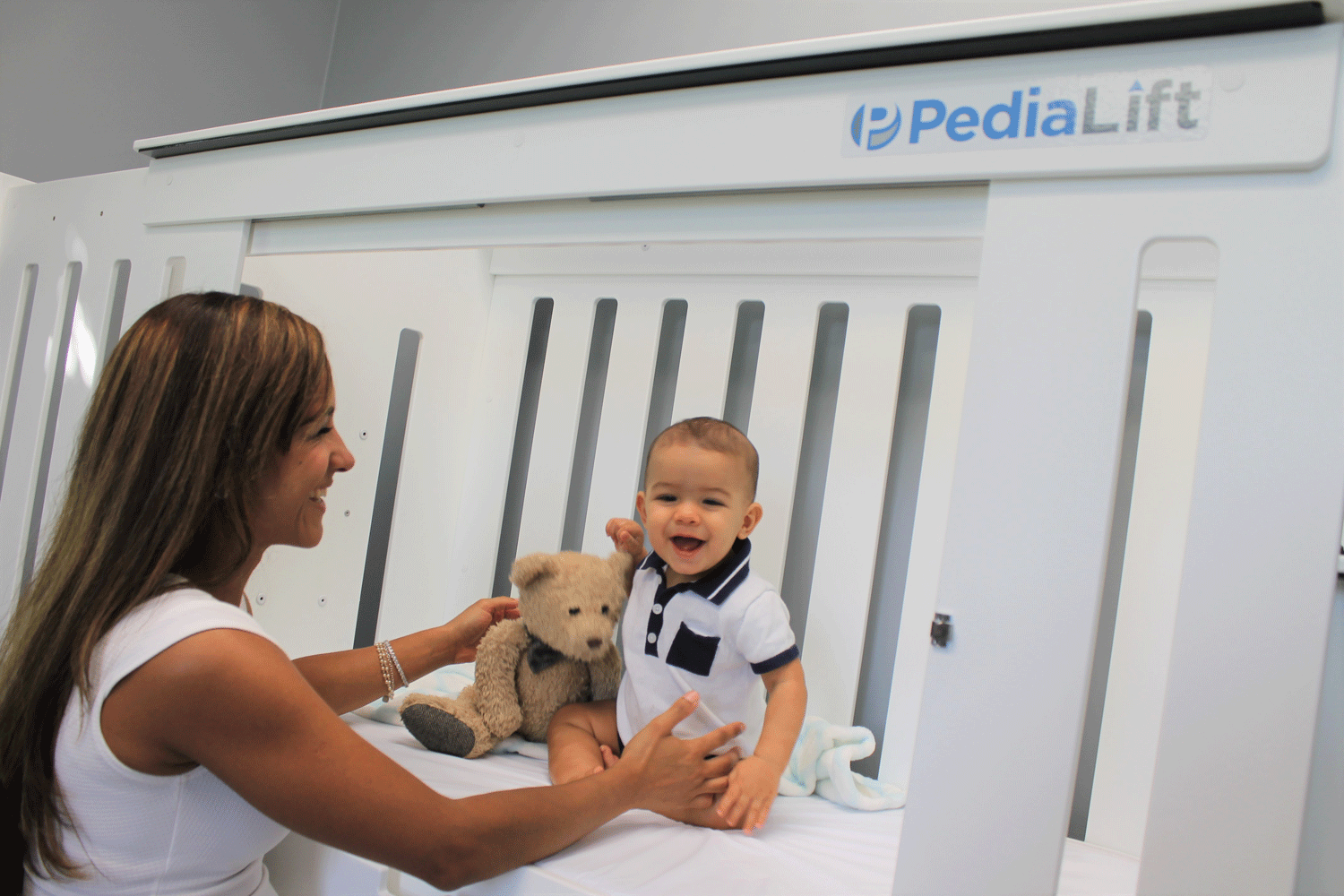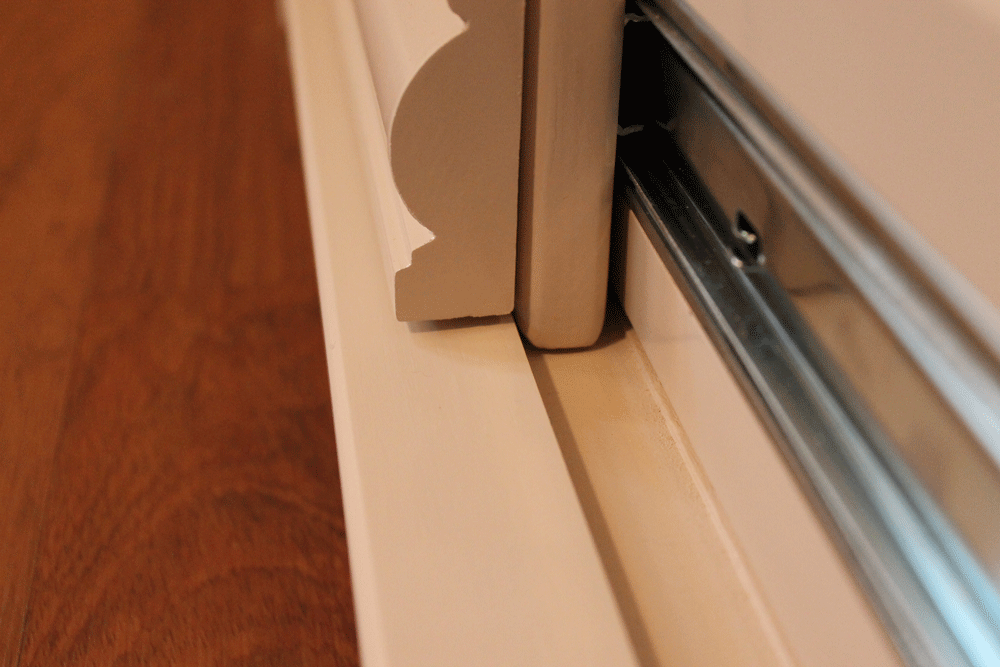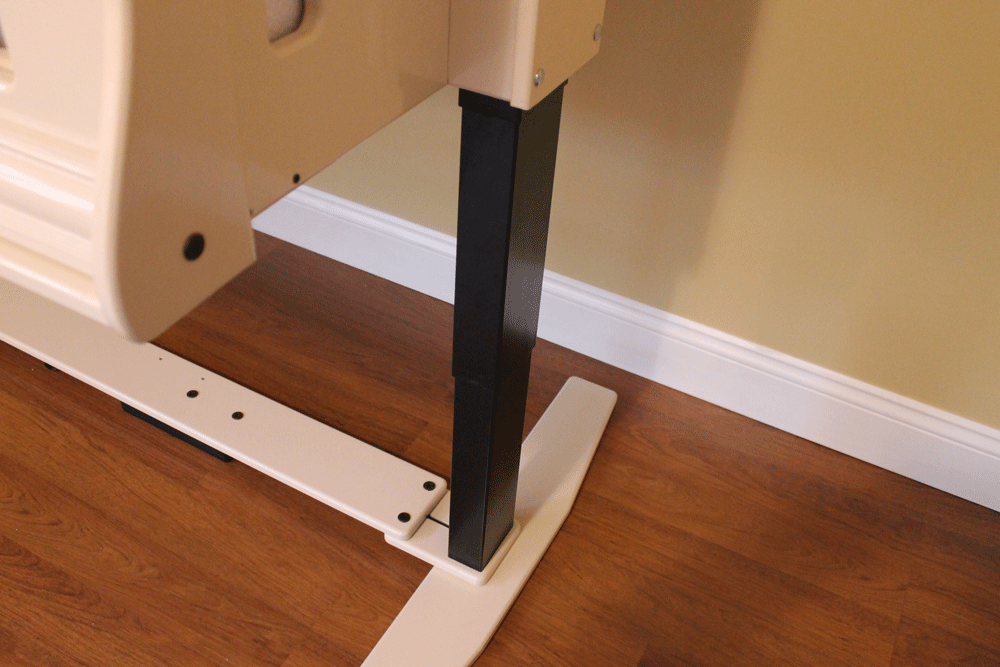Safety Features
The PediaLift Crib™ was specifically designed to provide handicapped parents with a SAFE way to transfer their children to and from their crib.
Ergonomically, the PediaLift Crib™ offers an easy transfer environment by lifting the platform and allowing the user to pull underneath of it. Our crib doesn't require the parent to lean forward and compromise their stability.
At PediaLift, we thoroughly understand the dangers that arise when wheelchair using parents don't have access to an accessible crib. As a response to those risks, we have designed our PediaLift Crib™ to be a safe alternative.


Low-to-the-Ground Design
A quick search online will show how many have attempted to modify off the shelf cribs to make them accessible. Most of the modifications, involve extended legs to lift the crib high off the ground. While doing so does allow the parent to slide their chair underneath the crib, this approach is inherently dangerous because of a risk of fall to the child.
We all know that as our babies grow, they become both capable and adventurous. A toddler climbing out of their crib is not uncommon. If a crib is elevated, that also means the top of the sidewall is extremely high. Sidewall heights can easily reach 6-7ft. A toddler falling from this height could sustain devastating injuries.
This is exactly why the PediaLift Crib™ features a low-to-the-ground design, to be used while the child is in the crib. This means even if your baby was to climb out, their elevation wouldn't be any higher than a standard commercially available crib. The PediaLift Crib™ design itself is inherently safer because it can be low to the ground.

Allows safe and stablized baby transfers
The challenges that a wheelchair using parent is faced with when interacting with a crib are two-fold. The first problem, is the obvious problem of positioning. When you are seated low in a wheelchair, and almost shoulder height to a crib sidewall, your range of reaching down into the crib, has seriously diminished. Not to mention, you have the other problem of not being able to even pull up close to the crib because of the geometry of the chair.
The second problem is less obvious but probably even more dangerous. This problem is one of stability. Most people in wheelchairs have little to no use of the legs for stabilization. So, when they aren't seated in their seat back, they are unstable unless they can have one hand holding on to something rigid. In fact if they were to have to reach off center with both hands, they would likely lunge forward and fall. This is exactly the case when trying to lift a baby because both of their hands are occupied and they are reaching off center.
The PediaLift Crib™ addresses both of these problems and takes the dangerous task of transferring a baby and transforms it into a safer one. The PediaLift Crib™ raises off of the ground, elevating to a height that allows the parent to pull under the crib and close to the transfer surface. By doing so, it puts the transfer surface at an ergonomic level that allows for easy transfers.
Wireless Access Control System
The PediaLift Crib™ features a wireless access control system, that ensures only people entrusted with access, can open the crib. This is important because in many households, there are several children around and controlling who can open the crib, becomes very important. For example, having big brother or big sister being able to pop open the doors could create a real safety issue for the baby.
With PediaLift's wireless access control system, only the person entrusted with access can open the doors. The parent simply waves the wireless remote in front of the door latch and the doors pop open. This easy to use feature can be done entirely with one hand, allowing the other hand to be free for holding your little one.

Collision Reversal Technology
While designing the PediaLift Crib™ our engineers were very concerned with the possibility of the crib colliding with something or someone during its lifting or lowering cycle. For example, as the structure lowers it could collide with the wheelchair users feet (as pictured).
To address this concern, we integrated a Collision Reversal Technology that continuously monitors the loading of the lifting columns as it both raises and lowers the crib. Our controller constantly looks for evidence of an obstruction. If an obstruction is encountered, the lifting columns not only stop, but they reverse their direction. This safety feature works remarkably well.

Robust door system with redundant safety keeps
The PediaLift Crib™ utilizes a rugged sliding door system, designed to take abuse from little ones rocking and rolling inside the crib. Each door features two stainless steel door slides that offer strong and quiet performance.
In addition to the steel slides, each door is entrapped by a structural member. As seen in the photos, the door appears to be sliding in a pocket within the lower structure. This pocketed structure is known as a safety keep and is designed to entrap the door in the unlikely event that the slides fail.

Dual lifting columns
The PediaLift Crib™ features dual lifting columns with powerful actuators designed to effortlessly elevate the entire structure.
Having dual lifting columns (left and right side) means a redundant lifting force so if one column were to inadvertently fail, the remaining column can safely support the weight of the unit.
The actuators within the lifting columns feature a whisper quiet operation designed to not wake your sleeping baby. In addition, the system controller uses a soft-start and soft-stop algorithm that smoothes out abrupt movements to gently move your baby.